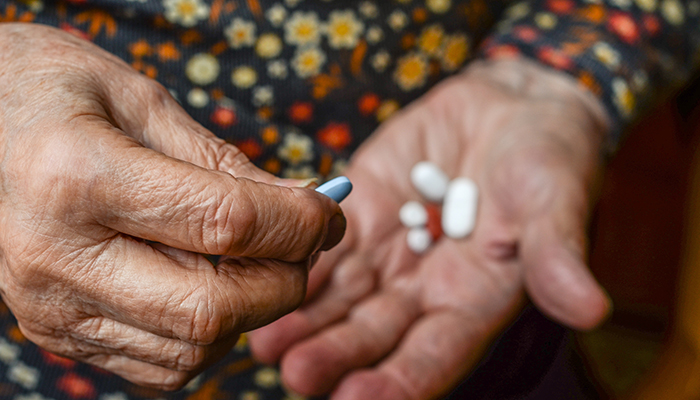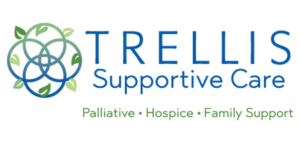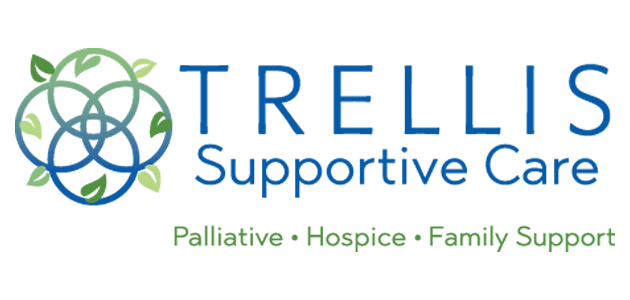Because We Care
Practical tips for family caregivers
November/December 2022
November is National Family Caregivers Month. To you, caring for a relative may seem like just what a good spouse or child does. But it is so much more than that. Certainly, there are positives, but you also sacrifice a lot. We salute you and all that you contribute! In our middle article we talk about the signs of frailty and what you can do if your loved one seems to be getting worse. Last, we look at the humble pillbox. There are more considerations than you might think in terms of helping your relative take their medicines as directed.
Honoring family caregivers
 November is National Family Caregivers Month. We want to express our gratitude to you, who are part of the 40 million people (one in six Americans) who care for an older adult friend or relative. So many family caregivers feel invisible, we thought we’d give you some perspective on the scope of family caregiving across the country. For starters, only 4% of our nation’s seniors live in nursing homes. Another 4% live in assisted living, plus 5% in retirement communities. Most (46%) live in their own home or in the home of a family member (37%) or someone else (4%). They are assisted by an unpaid network of family and friends—caring people such as you—who drive them to the doctors, prepare meals, and eventually assist with dressing, bathing, and toileting.
November is National Family Caregivers Month. We want to express our gratitude to you, who are part of the 40 million people (one in six Americans) who care for an older adult friend or relative. So many family caregivers feel invisible, we thought we’d give you some perspective on the scope of family caregiving across the country. For starters, only 4% of our nation’s seniors live in nursing homes. Another 4% live in assisted living, plus 5% in retirement communities. Most (46%) live in their own home or in the home of a family member (37%) or someone else (4%). They are assisted by an unpaid network of family and friends—caring people such as you—who drive them to the doctors, prepare meals, and eventually assist with dressing, bathing, and toileting.
The largest group of family caregivers provides ten hours of assistance per week. But 30% provide 20 hours a week, and another 20% provide forty hours or more. Yet many family caregivers don’t consider that they are essentially adding a part-time or even full-time job to their lives. Maybe you, too, think of it as “just what a good daughter/son, husband/wife/partner would do.”
Your contribution is not small! AARP has calculated that unpaid family caregivers provide 34 billion hours of care each year. That would be worth $470 billion if all were paid.
There are certainly rewards to caregiving. A feeling of gratification from giving back. Sometimes increased closeness with the person receiving the care. Pride in learning new skills. Greater compassion. Increased patience.
But family caregiving also has its costs. It can be demanding work. And family dynamics are often tough. Care receivers are not always grateful. Plus, there are often out-of-pocket expenses. Over $7,200 per year on average. Perhaps you’ve also felt that your health has suffered. Reduced sleep, minimal leisure time, delayed medical visits, and poor self-care are common. So are emotional consequences. More than one in three family caregivers reports high emotional strain. One in five reports feeling alone.
We salute you! As a nation, we owe an immense debt of gratitude to family caregivers. Thank you for all you do to help your aging and ill relatives. It does not go unnoticed by us! We are here to help.
Return to topSuppose they don't get better ...
 Are frequent visits to the ER a significant part of the past six to twelve months? Does your loved one seem more fatigued? Less interested in eating? Perhaps a bit withdrawn?
Are frequent visits to the ER a significant part of the past six to twelve months? Does your loved one seem more fatigued? Less interested in eating? Perhaps a bit withdrawn?
These symptoms may be hallmarks of a serious illness your relative will overcome. But it’s also possible that these signal that your family member no longer has the reserves to beat their condition. We all get to this point in life. Still, it can be hard to grasp when it is your loved one at this juncture.
While we each have our own journey, there are common signs that a person is entering their final chapter. The medical term is “frailty syndrome.” Here are some indications:
- Multiple hospitalizations or trips to the ER
- Frequent infections
- Reduced appetite, weight loss
- Sleeping more, especially during the day
- Trouble with balance (falling), walking, and getting around
- Requiring assistance with bathing, dressing, eating, or toileting
- Withdrawing from activities and social gatherings
- Nostalgic reflection on the past
- Mental fuzziness or confusion
If you recognize some of these signs, it doesn’t mean your loved one is at death’s door. To gain perspective, consider asking the doctor, “Would you be surprised if [relative’s name] were to pass away in the next year?”
Difficult as it may be to hear, the doctor’s feedback offers opportunities for discussion and choices. Your loved one can consider how to live out the time remaining to them. At this stage, many people may decide there will be no more hospital visits. No more chemo. No more fighting the inevitable. However, they may still have goals they hope to achieve, relationships to mend, or simply want time to spend with family. One option for relief from taxing symptoms is hospice care. They provide symptom relief so your loved one can live fully in the time that is left.
Return to topNot taking meds as directed?
 Taking the right medicines at the right time is extremely important to health management. But 75%–96% of older adults admit that they frequently make mistakes with their medication. Is your loved one among them?
Taking the right medicines at the right time is extremely important to health management. But 75%–96% of older adults admit that they frequently make mistakes with their medication. Is your loved one among them?
There are many reasons why a person might not take their medicines as directed. “Forgetting” is one of the most common. But difficulty opening the bottle or reading the label can also result in medication errors. A pillbox can help, but choose carefully:
- Are there enough compartments? Are they big enough to hold all the pills?
- Are the compartment labels large enough to read (day of the week and time of day)?
- How snug are the lids? If dropped, might one pop open and the pills go flying?
- How finger-friendly are the lids? If your loved one has arthritis, a push-button lid may be better than one that requires prying to open.
- What about traveling? Would the pillbox be easy to take on a trip? What about pills needed if dining away from home? (Also consider adding a small pill dispenser to their key chain. These make emergency medicines, such as nitroglycerin, handy for your relative whenever and wherever.)
As for reminders, some pillboxes come with automated alerts. But this assumes your loved one is near the box when it’s time to take the medicine. Consider instead setting reminders on their phone or smartwatch.
One pillbox alternative is to work with a pharmacy that sends pills prepackaged with each packet stating, in large letters, its contents and when (day, date, time) to take the pills. If your relative’s medications do not change often, this can be a fine solution. Plus, the packets are good for travel (out for the day or for several days at a time).
Return to top
